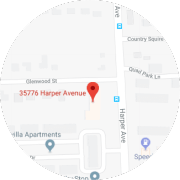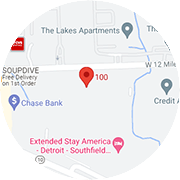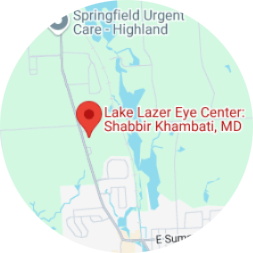There are an estimated 41 million people in the United States who use contact lenses for temporary vision correction – and many of them have known the pain of CLI.
CLI is Contact Lens Intolerance, and it’s no joke. If you want to avoid this painful condition, read on to learn what it is, how it develops and what you can do about it.
What is contact lens intolerance (CLI)?
Contact lens intolerance is a common complication of long-term contact lens use. It happens when the eye becomes irritated with contact use and “rejects” the lens as a foreign body. People with CLI will notice symptoms soon after putting in contact lenses:
CLI symptoms:
- Dryness
- Watery eyes
- Irritation and pain
- Itching and redness
- Sensation of grit or foreign body in the eye
CLI symptoms are treatable, but failure to address the underlying cause could result in recurrence and dangerous complications:
- Vision loss
- Eye damage
- Eye infections
- Corneal ulcers and abrasions
How to treat CLI
Removing contact lenses offers some temporary relief from the redness, dryness, grittiness, burning and blurriness of contact lens intolerance. However, these symptoms can also be caused by a number of eye conditions, so never assume your eye irritation is caused by CLI.
See an eye doctor immediately for diagnosis and the appropriate treatment for lens intolerance. Bring your most recently used contact lenses with you to your appointment. Your ophthalmologist may be able to examine them to aid in diagnosis.
To keep your eyes comfortable in the meantime, apply lubricating eye drops from a new, unopened bottle or single-use vials of preservative-free drops. Apply a warm compress over your eyes while you give them a much-needed rest.
CLI prevention tips
Many contact lens wearers will experience intolerance at one time or another. You can reduce your risk of CLI by practicing good lens hygiene.
- Wear contacts only for the length of time for which they were designed. In other words, wear daily contact lenses for one day, weekly lenses for one week and so on.
- Remove contact lenses for sleeping, napping, showering or swimming.
- Replace contact lens solution frequently according to product instructions.
- Store and clean lenses only in lens cleaning solution, never with tap water or bottled water.
- Wash hands before and after handling contact lenses.
- Discard and replace damaged or potentially contaminated contacts.
If you carefully follow these steps and still develop contact lens intolerance, consult your eye doctor. Your doctor can work with you on more aggressive treatment and prevention approaches.
Eliminate CLI risk through LASIK.
No matter how diligent you are about contact lens cleaning and storage, you may still experience recurrent intolerance. The only surefire way to prevent CLI is to avoid contact lenses entirely. There are two ways to do this: 1. switch back to wearing eyeglasses, or 2. get free from glasses and contacts through LASIK.
At Lake Lazer Eye Center, Dr. Khambati has helped thousands of people – many with CLI – escape the daily need for glasses and contacts through advanced vision correction procedures.
See if you may be a candidate for SoftTouch LASIK or the SMILE procedure by taking our 60-second LASIK Self-Test, then schedule your no-obligation consultation to learn more.
Lake Lazer Eye Center offers up-front pricing, and convenient and affordable payment plans for SoftTouch LASIK and the SMILE procedure. Detroit LASIK surgeon Dr. Shabbir Khambati has helped thousands of people from all over the world escape the restrictions of glasses and contacts. In the event that you’re not a candidate for vision correction, we’ll assist you with a contact lens evaluation or a selection of designer and specialty eyewear.

 586-792-3891
586-792-3891




